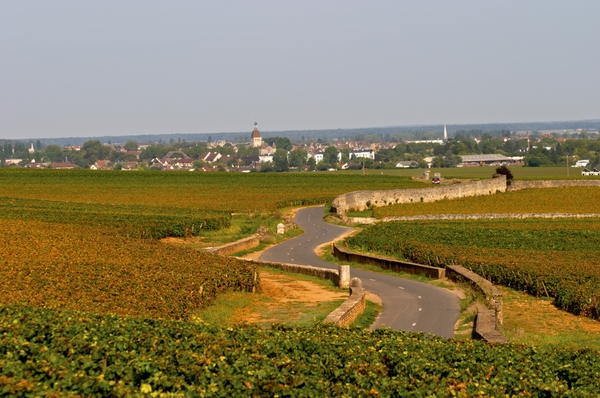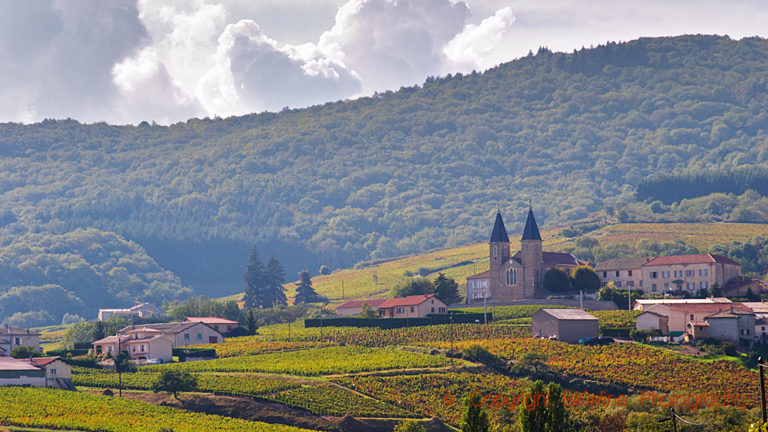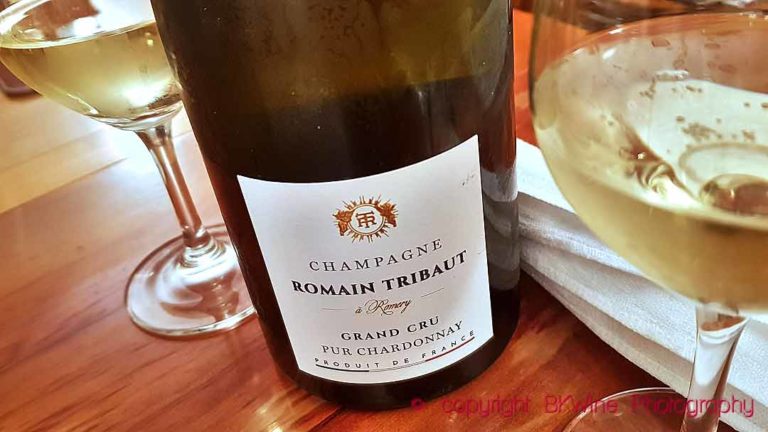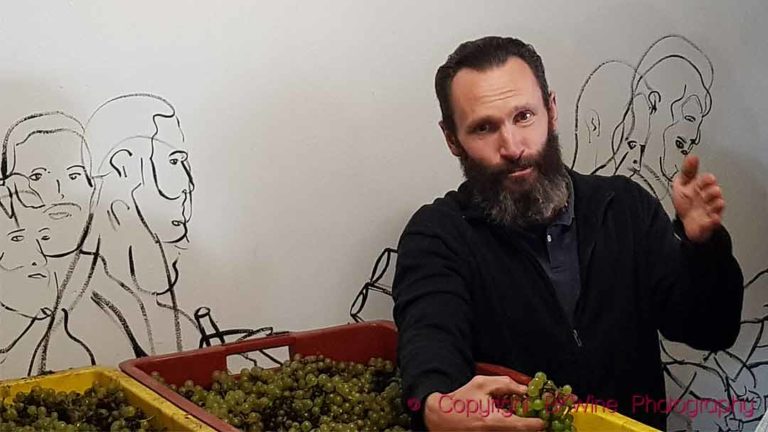Philippe Pacalet is known as one of the first natural wine producers in France. He currently has a comparatively large production where he rents land from various land owners and produces about 30 different wines in Burgundy. The number of different wines is not uncommon for a Burgundy producer but that all is natural wines is unusual. The 30 different wines also spread the risk if one of the wines turns out not to be a success some year.
Philippe, through his wine company, handles everything in the vineyards from pruning to bottling. His philosophy is that nature shall govern the production and not new technology. Phillip told me that he has an old wine press where he does not separate the stalks before pressing the white wines instead pressing carefully so as not to break the stems.
Philippe does not use chemical fertilizers or sprays in the vineyards and uses the natural yeast. However, sulphur is used to a limited extent to stabilize the fermented wines. The wines produced are unique for each year. Each soil and cultivation, terroir, is evident in the finished wines.
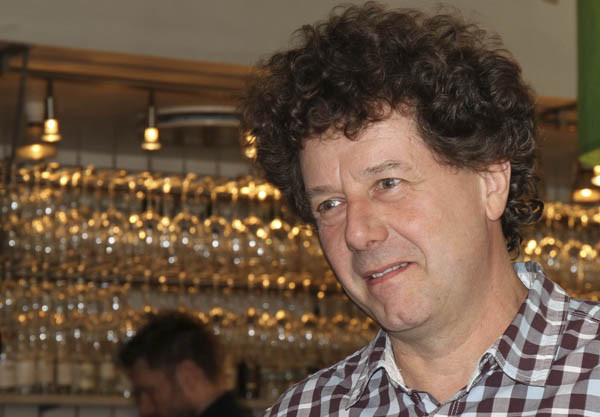
2014 was mostly a normal year with a very warm June, which sped up the ripening, but the rest of the year was normal and gave a relatively good harvest.
The wines we tasted gave evidence of the close-to-nature culture but without the problems that sometimes occur with this type of production. Many of the wines tasted will benefit from further ageing.
The wines tasted were:
Bourgogne Aligoté 2012, from two different vineyards with vines that are about 45 years old, the wine has a spiciness and acidity with citrus tones.
Chablis 1er Cru Beauroy 2009, yellow colour and quite complex for a Chablis with lots of minerality and lemon.
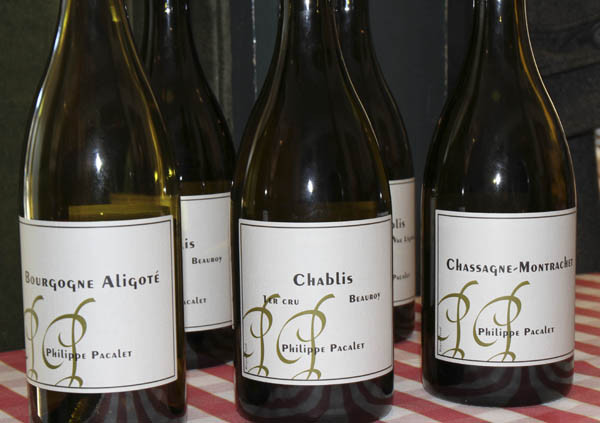
Chablis 1er Cru Vau Ligneau 2009, strong yellow colour and even more complex although slightly lower acidity.
Chassagne-Montrachet 2009, was my favourite among the white wines, grown next to 1er cru plots, light yellow with very pears, some pepper and balanced acidity and a long pleasant aftertaste.
Bourgogne Rouge Vieilles Vignes 2012, bright red and typical pinot noir with soft tannins.
Pernand-Vergelesses 2011 and 2010, both were rather easy-drinking wines but that definitely can be enjoyed now but probably will not benefit from cellaring.
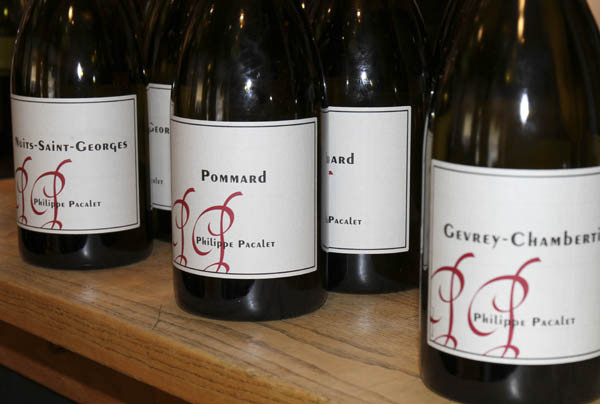
Chambolle-Musigny 2011, red berries and much minerality, a very good wine
Nuits St Georges Rouge 2011, lots of fruit but with good minerality and tannins.
Pommard 2009, dark fruits and spices gives a wine with a good balance. One of the best in this tasting.
Gevrey-Chambertin 2009, lots of minerality in this wine with some spiciness and fine balance between acidity and tannins.
Philippe Pacalet was on a visit to Stockholm at the invitation of the TM Kvalitetsviner, the importer.
Peter Cronström writes on BKWine Magazine on wine tastings with wine merchants and importers.
[box type=”info” style=”rounded” border=”full”]Burgundy has many exciting wine producers and excellent wines. It is also a beautiful region to travel in. Come on a wine tour to Burgundy to enjoy the wines, food and landscape with BKWine.
Explore the world’s wine regions with the experts on wine and the specialist on wine tours.[/box]
